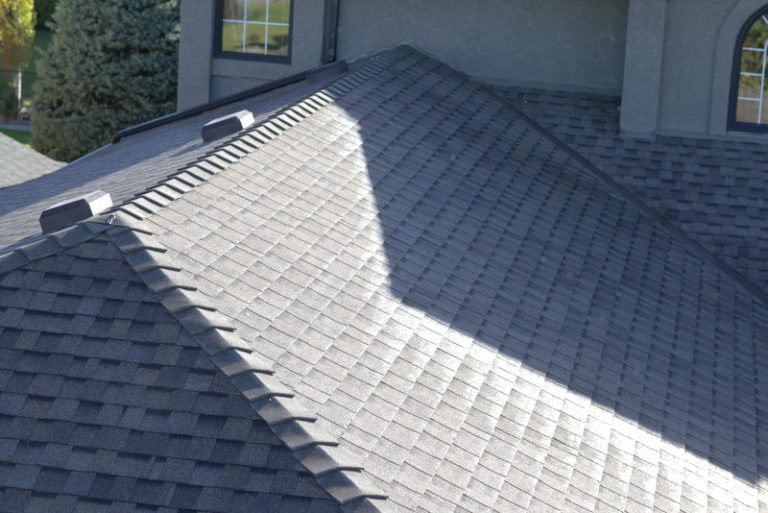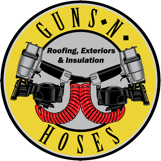Your soffit is a key component of your roofing structure and is often overlooked. Most homeowners when doing a visual inspection aren’t looking at it, they’re looking for missing or damaged shingles, or detached gutters. But the truth of the matter is, when left unaddressed, soffit damage can lead to serious attic and roofing issues.
In today’s blog, the experts at Guns N Hoses will go over what soffit is, how to identify damage, common issues and the benefits of prompt and professional service to keep your roof’s integrity strong and water damage out! Guns N Hoses has been the Calgary Area’s go-to choice for roofing and exterior installation, maintenance and repair. Call us today!
What is Soffit & What Does it Do?
Soffit is what you can see underneath your eaves on the exterior of your home, when combined with gutter and fascia installation it creates a seamless, attractive finish that effectively repels water, debris and even pests from entering your roofing structure or attic and creating damage.
Soffit in particular covers the underside of the roof overhang. Its primary purpose is to prevent water damage, while also promoting ventilation and air circulation.
Available in two different types, vented or non-vented, the type you need will depend on the current ventilation in your attic. For example, if there is little to no air circulation running through your attic, you'll want to go with non-vented soffits. While if you’ve had recent renovations done to increase airflow, you may not need additional ventilation.
You can also get a mix of vented and non-vented soffits if you only need minimal added airflow. Our exterior installation experts will always go through a thorough evaluation of your attic and recommend the best material options or combos for you.
Why Is Ventilation Important?
Properly installed aluminum soffit from Guns N Hoses can improve ventilation, and increase air circulation. Which sounds good, but why is that really important?
Well, ultimately it prevents roof decay, prolonging your investment. But it also helps regulate attic temperature which can lower your monthly heating and cooling bills, and prevents moisture buildup which can result in mold growth which can be hazardous to your health.
Soffit is truly a powerhouse material!
Common Causes of Soffit Damage Here in the Calgary Area
Just like your shingles, gutters or siding, soffit can be damaged and should be inspected regularly to ensure performance. Here are a few of the most common causes of soffit damage in our area.
If you’re a Calgary resident, then you’re familiar with our harsh winters, heavy snow (and resulting ice dams), and strong winds. All of which can cause your soffit to crack and warp. This damage can result in leaks, poor drainage and higher ice buildup, which can cause your soffit and other roofing and exterior materials to rot and weaken over time.
Obviously, soffit damage isn’t something to play around with. But how do you know if it’s damaged? Let’s explore that more below.
Is Your Soffit Damaged? - The Signs
The first step in addressing soffit damage is by identifying through a visual inspection. It’s best to do this at least twice a year before and after the presence of water or heavy snow. Here’s what you need to be on the lookout for.
Crack and Gaps
If there are cracks in your soffit or it has started to come away from the underside of your roof, this is a glaring red flag, and that repairs or a full replacement is needed!
Water Stains
Take a closer look at your soffits, water stains aren’t just something that can be wiped clean. Stains mean that water has found its way to the underside of your soffits and is sitting. Slowly rotting away roofing and exterior materials from the inside out.
Increased Humidity & Mold Growth
If you’re noticing your attic is warmer and more humid than normal, that could be another sign that the integrity of your soffits has been compromised. High humidity levels are the perfect breeding ground for mold and bacteria, so don’t just wait for colder temperatures and hope that it dries up and goes away.
If you notice one or more of these issues, call us in right away! When left unchecked, soffit damage can let water, debris and even sneaky little critters into your attic and negatively affect your insulation and even your roof as a whole.
Why Choose Guns N Hoses For Your Soffit Repair Or Replacement
The choice to repair or replace your soffit will depend on the age of the existing material and the extent of the damage. Not sure where to start? Give Guns N Hoses a call! Each appointment begins with an inspection and evaluation so we can recommend the best course of action.
Every member of our roofing and exterior’s team is licensed, certified and continuously trained to bring you our industry-leading soffit repair and replacement service.
Your contractor will discuss various material and style options, while considering durability, maintenance, aesthetics as well as your budget. We specialize in Alu-Rex material offerings to reduce maintenance costs and increase the value of your property. We also use a specialty finish guaranteed not to chip, crack, or peel for 20 years!
Finally an estimated timeline for the repair or replacement job will be provided so you can plan accordingly.
Now for our industry-leading service!
We carefully remove your existing soffit, and undergo any repairs necessary to the roofline or underlying structure. The work area will then be prepared to protect your home and landscaping from possible debris.
We custom-fit your soffit on-site at the time of installation to maximize efficiency and protection.Soffits are installed or repaired to manufacturer and industry standard to ensure proper ventilation for your attic space and to protect against moisture and pests.
Once the work is complete, your contractor will conduct a final inspection to ensure quality workmanship.
Leave No Trace Guarantee
We know that there’s nothing worse than having to clean up after someone else, but you’ll never have to worry about that when you choose Guns N Hoses. We leave no trace, so the only way you’ll know we were there is your shiny new soffits!
Year-Round Service
If your current exterior needs a little TLC, there’s no sense in waiting months for a repair. That will just make the problem worse! We operate year-round so you can find the help you need when you need it.
Preventative Maintenance, Prevent Soffit Damage
In addition to the regular visual inspections we’ve mentioned above. One of the best, and easiest, ways to prevent soffit damage is by doing a little preventative maintenance in the form of gutter cleaning!
Keeping your gutter free of debris buildup, helps keep rain water moving out and away from your soffits, keeping everything nice and clean.
Upgrading your attic insulation is another great way to improve the lifespan of your soffits, and Guns N Hoses can help out with that too! We offer a number of insulation options that are applied throughout your space ensuring proper coverage. We pay special attention around vents, rafters and windows to prevent air loss, and excess moisture.
Don’t let soffit damage turn into a costly nightmare. Nip it in the bud with prompt, professional service from Guns N Hoses, Calgary’s premier roofing and exteriors company. For almost 20 years, we’ve been installing the highest grade gutters, fascia and yes soffits to homes in and around the Calgary area.
Protect your roof, your attic and your peace of mind with Guns N Hoses, get in touch today!
Common Questions About Your Soffit
Do I need to replace my roof to replace my soffit?
No! Gutters, soffit, and fascia are installed independently from your roof. If you think you need a repair or replacement, please don’t hesitate to reach out and we’ll discuss your options!
How long does installation take?
Every installation and home is unique, that’s why every installation appointment begins with a comprehensive evaluation and upfront cost and timeline estimate.
Your home is one of the most significant investments you'll ever make, so protecting it is important. That’s typically your roof’s job—but roofs require regular maintenance if you want them to last as long as possible.
Here at Guns N Hoses, we've performed high-quality roof repairs and replacements for years, so we’ve learned plenty about the kind of long-term care roofs like yours need. Here are some practical tips to help you extend the lifespan of your roof so you can count on it for years to come.
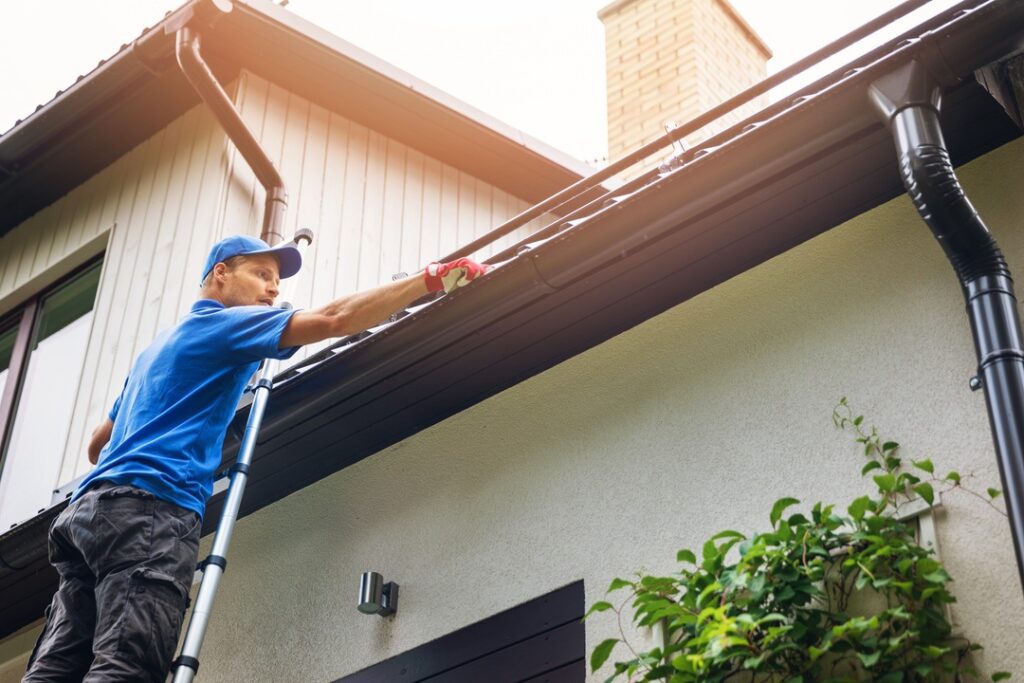
1. Regularly Inspect Your Roof
Carrying out regular inspections is a fundamental part of roof maintenance. Ideally, inspections should take place twice a year—once in the spring and once in the fall. This allows you to catch any potential issues before they get worse and require costly repairs. You should also consider inspecting your roof after any severe weather events, as these can often cause unexpected damage.
During your inspection, look out for signs of wear and damage. These may include:
- Missing, damaged or curling shingles
- Rust spots on any metal areas
- Moss or lichen growth
- An excessive amount of material in your gutters
Any of these signs can indicate potential issues that need to be addressed.
See Also:
2. Clean Your Gutters
Cleaning your gutters might seem unrelated to your roof, but it actually plays an important role in roof maintenance. Gutters that are clogged with leaves, twigs, and other debris can cause water to back up into your roof system, eventually damaging your roof and even your home's interior.
In addition to cleaning your gutters regularly, make sure to pay extra attention to them in the fall when leaves are more likely to clog them up, and after severe weather events that might cause a build-up of debris. Keeping your gutters clear helps ensure proper drainage and prevents water damage.
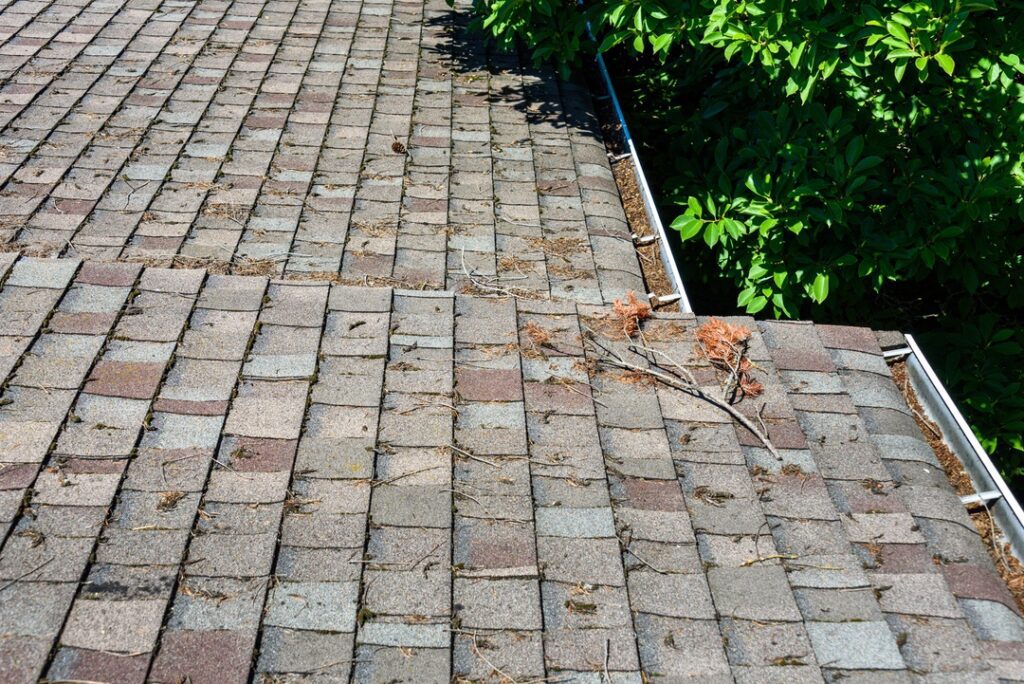
3. Remove Debris
Getting debris off your roof is another key maintenance task. Over time, debris such as leaves, branches, and dirt can accumulate and hold moisture against your roofing material. This moisture can create rust and eventually weaken your roofing materials, shortening its lifespan and increasing the risk of mold and mildew growth.
Make it a point to clear debris from your roof periodically, especially after storms or high winds that can deposit an unusual amount of debris. By doing so, you'll promote better drainage and help preserve your rooftop.
4. Address Minor Issues Promptly
Remember: no roofing problem is too small to address. Seemingly minor roof issues can quickly evolve into significant problems if not dealt with in a reasonable amount of time. For example, small leaks can lead to extensive water damage, while a few damaged shingles can expose your roof deck to the elements, potentially creating much larger problems.
Learning how to replace damaged shingles and seal small leaks can be a great way to maintain your roof in between professional inspections. However, if you're not comfortable doing these tasks yourself, or if the damage seems extensive, it's important to call in a professional right away.
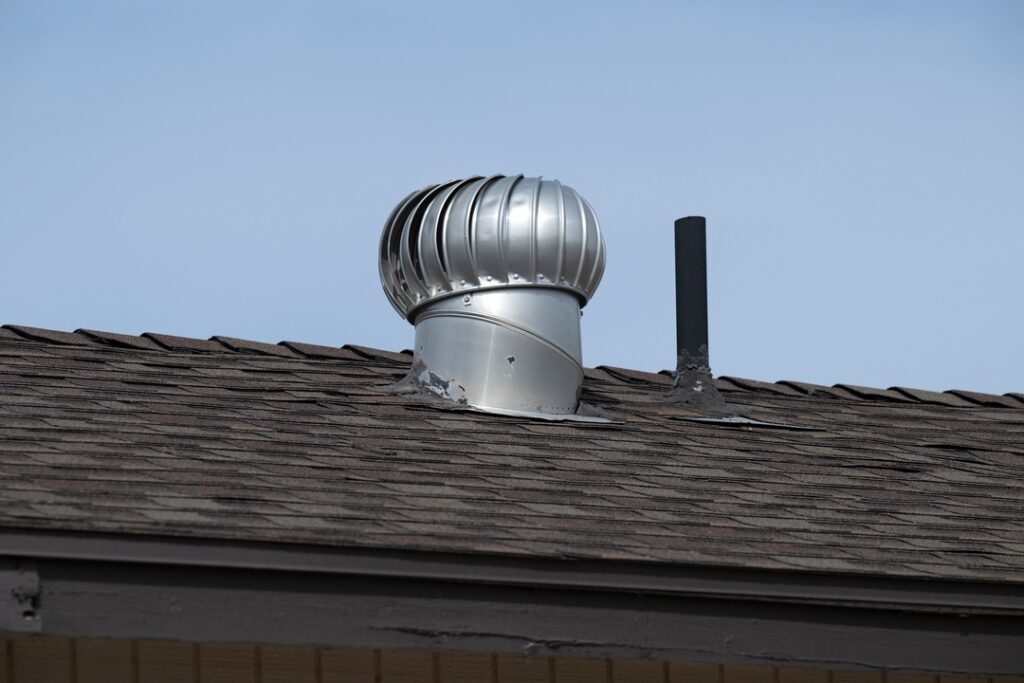
5. Monitor Ventilation & Insulation
Ventilation and insulation play a key role in the health of your roof. Proper attic ventilation and insulation help regulate the roof's temperature and moisture levels. By preventing extreme temperature differences between the attic and the outside, you can avoid common problems like ice damming in the winter and excessive heat in the summer.
Check your attic regularly to ensure the insulation is intact and the ventilation is unobstructed. An inadequately ventilated or insulated attic can lead to a host of roofing problems over time, including premature aging of your roof.
See Also:
6. Invest in Preventive Measures
Preventive measures can significantly increase the lifespan of your roof. Shingles with high-quality protective coatings, for instance, offer added defense against the damaging effects of the sun, water, and physical wear and tear.
While investing in premium shingles might seem like an unnecessary expense, it can pay for itself over time by extending the life of your roof. Many higher-end shingles also have impact-resistant properties and are rated for higher wind speeds, which can make them valuable for Calgary homeowners during the city’s spring and summer hailstorms.
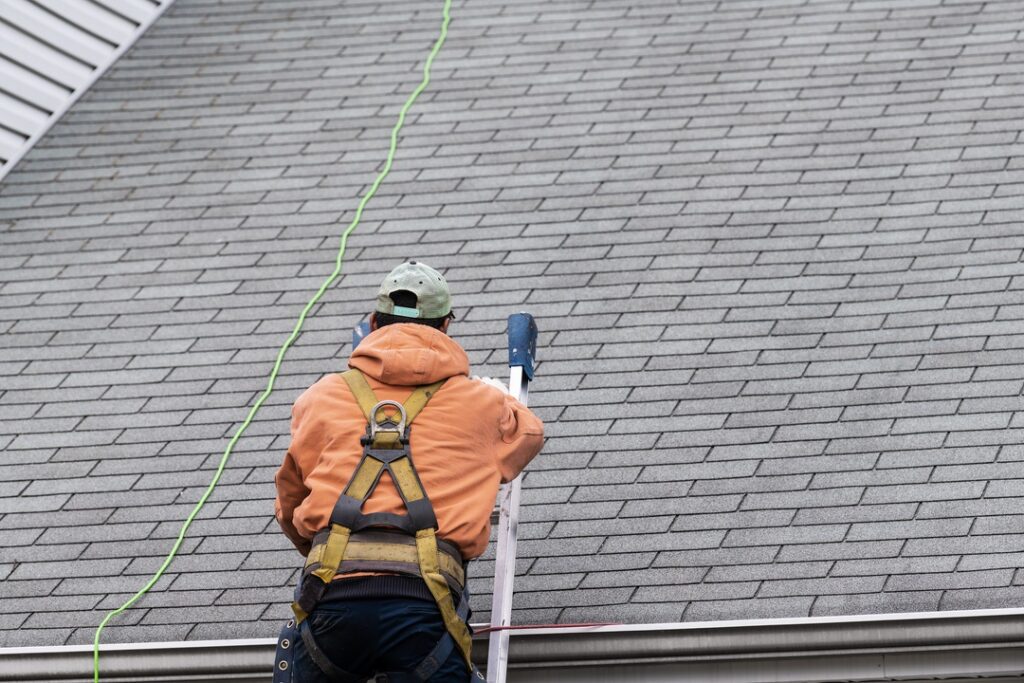
7. Know When to Call Professionals
While there are a number of roof maintenance tasks that you might be able to undertake on your own, some tasks are best left to professionals. Complex repairs, installing protective measures, and even yearly inspections should all be conducted by roofing contractors with professional certifications and enough experience to do the work correctly.
Our professional roofing contractors are members of the Alberta Allied Roofing Association, and are certified by numerous professional organizations and brands—including HAAG, Euroshield, BP, and Velux. When it comes to the health of your roof, knowing when to DIY and when to call in our pros can make all the difference. If you're unsure, it's always safer and often more cost-effective in the long run to give us a call.
Frequently Asked Questions About Rooftop Maintenance
How can I safely access my roof to perform inspections and maintenance?
Use a sturdy ladder that extends at least three feet past the roof's edge. Make sure the ladder is on solid, level ground and, if possible, have someone hold it for extra stability. Consider using safety equipment such as a harness if you're uncomfortable or dealing with a steep or high roof.
What are the maintenance requirements for different roofing materials?
In addition to the steps above, certain roofing materials require specific considerations. For example:
- Asphalt shingles need regular checks for granules in the gutter, as it's a sign of wear.
- Metal roofs should be checked for rust, and any scratches or chips should be sealed promptly.
- Tiles need regular inspections for cracks or breakage.
Regardless of the material, you should always make time for regular cleaning and removing debris.
How can I protect my roof from damage caused by extreme weather events?
Regular maintenance and inspections are the keys to weatherproofing your roof. By keeping gutters clear, removing heavy snow promptly, and ensuring your roof's ventilation and insulation are working properly so that ice dams can’t build up easily, you’ll prevent most inclement weather from wreaking havoc on your rooftop.
Investing in impact-resistant shingles can also help protect your rooftop from hail and blown debris, which are both common risks for Alberta rooftops. Finally, regular inspections are the best way to catch any damage early and prevent it from getting worse.
Remember, your roof protects the rest of your home—so you’ll want to take great care of it for as long as you possibly can! For professional help with your roofing needs, reach out to us at Guns N Hoses. We're always here to help and ready to show you how.
Ventilation might not be the part of your roof you think most about, but it’s surprisingly important. If you're striving for a roof that can offer you years of reliable protection and save you money in the long run, understanding why roof vents matter and what different kinds exist is critical.
Fortunately, as some of Calgary’s most experienced roofing contractors, the Guns N Hoses team is here to tell you all about why roof ventilation matters. Read on as we cover the different kinds, their pros and cons, common signs of ventilation problems, and more.
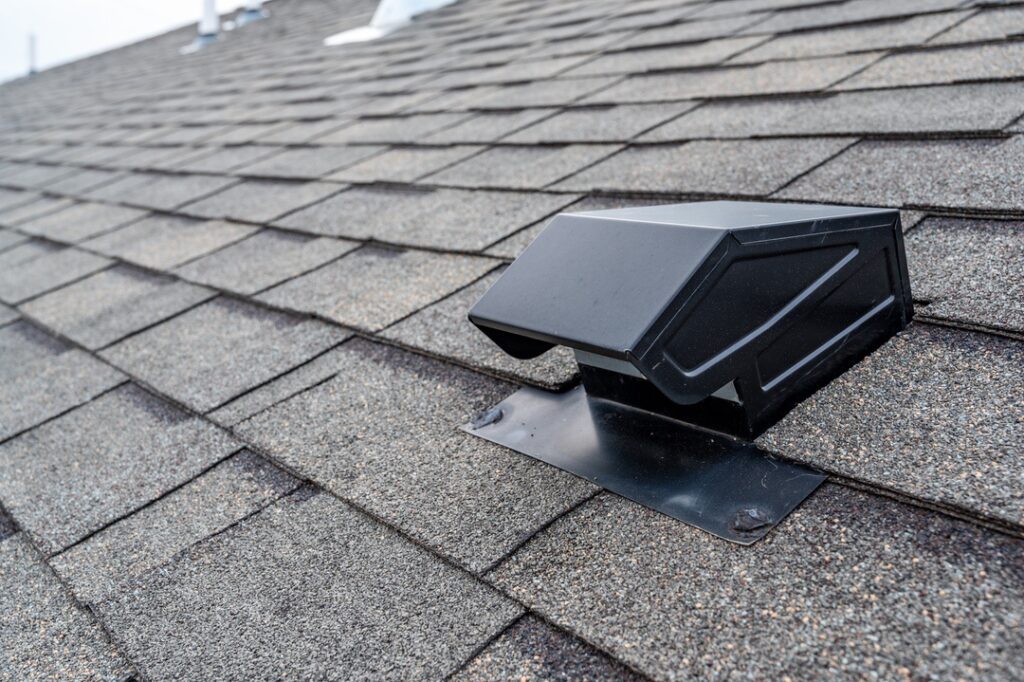
Why Does Roof Ventilation Matter (& How Does It Work)?
Simply put, the purpose of roof ventilation is to keep a continuous flow of outside air through the attic (or directly beneath the roof deck for homes without attics). This serves two main purposes:
- Keeping your home energy efficient by preventing heat from building up and overworking your cooling equipment
- Preventing moisture from accumulating and potentially causing water damage within your home
Although there are different kinds of vents (which we’ll get to in a moment), the ventilation process works in a fairly straightforward way: intake vents are placed at the roof's lowest point, and exhaust vents are installed at the roof's peak. This setup allows for a natural flow of air, with cool air entering through the intakes and warm, moist air exiting through the exhausts.
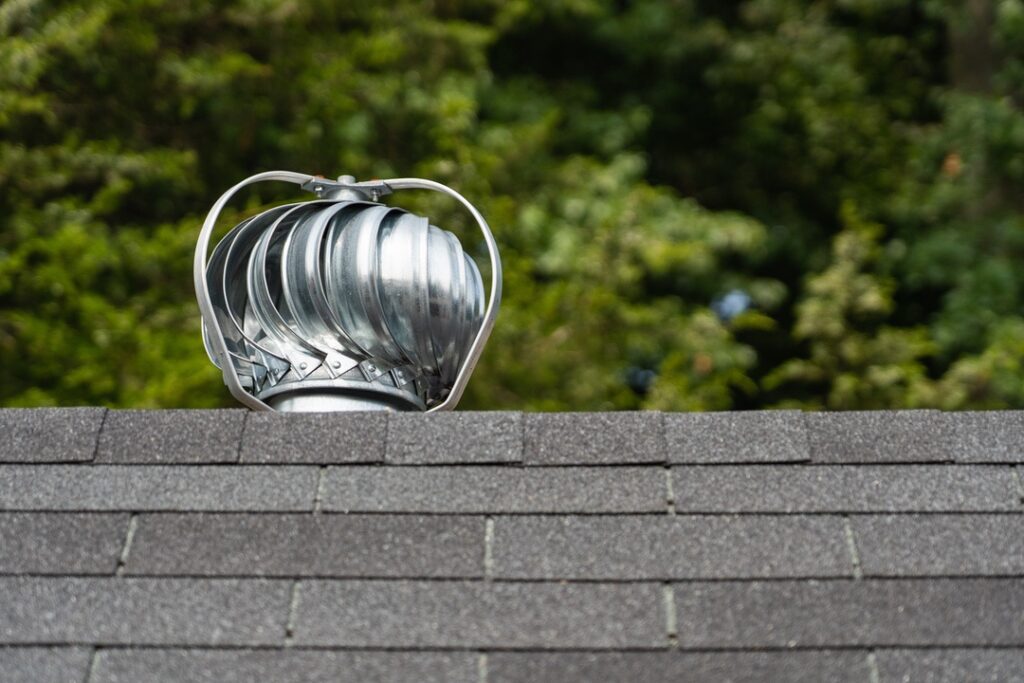
Different Types of Roof Ventilation Systems
There are several types of roof ventilation systems available, such as:
- Solar Vents: These innovative vents use solar power to pull hot air out of your home’s upper levels and bring cool air in.
- Ridge Vents: These are installed along the ridge line, or peak, of your roof. Ridge vents run the entire length of the ridge, allowing warm, moist air to escape from the highest point in your attic.
- Soffit Vents: Soffit vents are installed in the eaves of your roof, allowing cool air to enter the attic. They're typically placed along the underside of your home's overhangs.
- Gable Vents: As the name implies, gable vents are installed in the gable ends of a house. They allow air to circulate freely in the attic, acting as an exhaust for hot air.
- Turbine Vents: These are dome-shaped vents that use wind power to create a strong updraft of air. Turbine vents are effective in expelling hot air and promoting air circulation in the attic.
While the above differ in design and placement, their functions revolve around the same principle of circulating air to eliminate excess heat and moisture. Solar vents take a unique approach to this concept by using solar energy to actively circulate air through your attic, which effectively reduces the risk of air settling under your roof and becoming trapped.
The Benefits of Proper Roof Ventilation
Preventing heat and moisture buildup under your roof with proper ventilation has a few side benefits as well. These include:
- Keeping your attic cool during the summer
- Reducing your energy consumption and saving you money on your energy bills
- Lowering the odds of pests that are drawn to moisture infesting your attic
Effects of Inadequate Roof Ventilation
Ignoring the ventilation of your roof can lead to a host of problems, including:
- Mold growth due to excess moisture
- Condensation problems
- Ice dams in winter
- Reduced energy efficiency due to trapped heat
- Possible pest problems from cockroaches, silverfish, and others
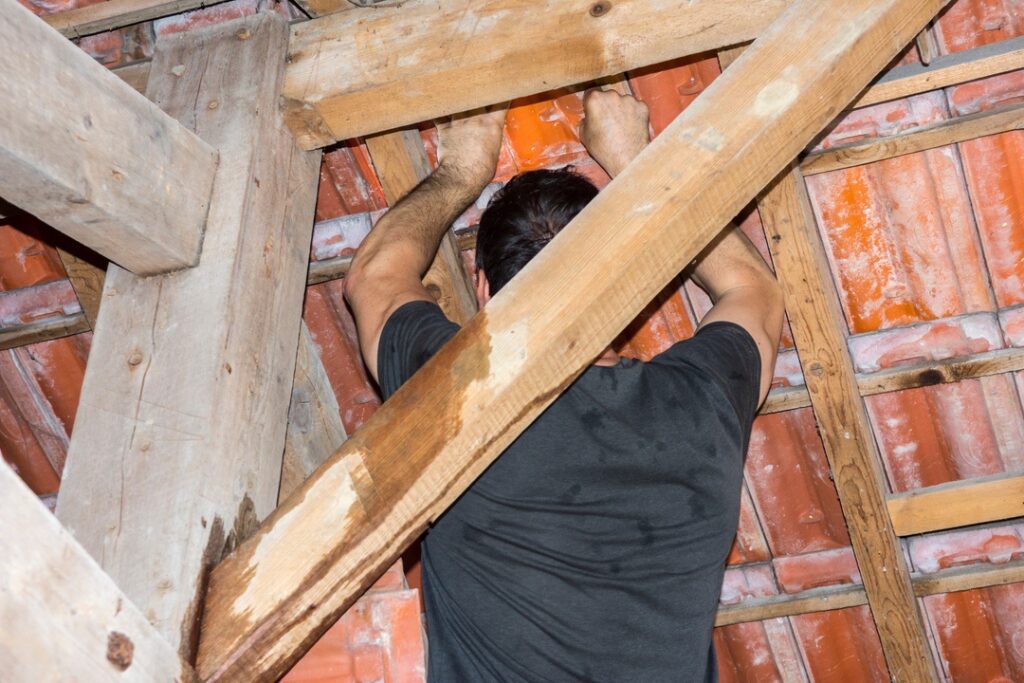
Signs of a Ventilation Problem
Many of the problems above are noticeable signs that you might have an issue with your roof’s ventilation. But here are a few other signs that something might be wrong:
- Musty or moldy odors in your home
- High energy bills
- Curling or buckling shingles
- High levels of humidity in your attic or on upper floors
Assessing Your Roof Ventilation System
The general rule of thumb according to industry best practices is to have 1 square foot of vent area for every 300 square feet of attic floor space. However, note that these ratios can change based on different factors like whether the attic has a vapor barrier or the slope of the roof.
The best way to assess the health of your roof’s ventilation system is to contact our professional roofers, who can tell you definitively if you have problems that need to be addressed.
However, it’s easy to get a basic idea of whether your roof vents are working by yourself—simply check for visible signs of damage, make sure your vents are unblocked, and keep an eye out for the issues mentioned above.
Improving Your Roof's Ventilation
Remember, it's important to consider the balance of intake and exhaust vents for optimal airflow. It may also be worth upgrading from passive vents (like ridge, soffit, and gable vents) to a more active solution like solar vents, as these can be more effective at cycling air in and out of your home.
Long-Term Consequences of Ignoring Ventilation Issues
On the other hand, ignoring roof ventilation issues is all too easy—and it can result in expensive problems. These include:
- Having to make structural repairs due to moisture damage
- Decreasing the lifespan of your roof due to shingle deterioration
- Increasing your home’s cooling costs as heat becomes trapped indoors
Costs & Savings of Ventilation Improvement
The costs of improving your roof's ventilation will vary based on the type and extent of the upgrades. However, these upgrades could result in substantial energy savings over time (over 10% of your cooling costs for some homes), as well as an increased lifespan for your roofing materials—both of which can offset the initial investment in the long run.
If you’re looking for a cost-effective way to upgrade your roof ventilation or simply haven’t checked it in a while, it might be time to reach out to our professional roofing contractors. We’ll be able to offer expert advice tailored to your specific situation and recommend a solution that fits your needs and budget.
A leaking roof is more than just an annoyance that can cause dripping water indoors—it’s also a potential safety hazard that can seriously impact your home’s value if it’s not dealt with quickly. That makes spotting roof leaks early essential for conscientious homeowners, as well as knowing what to do when you recognize one.
Below, our team explains how to discover roof leaks, and what you can do to slow them down so that their impact is minimized until you can schedule professional roof repair. Read on and learn how to keep the roof over your head safe and sound.
Common Causes of Roof Leaks
Roof leaks can be caused by various factors, including:
- Damaged or missing shingles: Harsh weather, falling debris, or improper installation can lead to damaged or missing shingles, exposing the roof's underlayment and decking to water intrusion.
- Cracked or deteriorated flashing: Flashing is a protective barrier installed around roof penetrations such as chimneys and vents. Over time, flashing can crack or deteriorate, allowing water to seep in around these vulnerable areas.
- Clogged gutters and downspouts: Leaves, debris, and dirt can clog gutters and downspouts, preventing proper water drainage. When water overflows, it can damage the roof's edges or find its way under the shingles.
- Poorly sealed vents and skylights: Vents and skylights require proper sealing to prevent water intrusion. If not sealed correctly, they can become entry points for water, leading to leaks.
- Ice dams in colder climates: In Calgary’s cold climate, ice dams can form at the roof's edge in winter, trapping melting snow and ice. This water can then seep under shingles and cause leaks or damage to the roof's structure.
- Damaged roof decking or underlayment: The roof decking and underlayment serve as crucial barriers against water infiltration. If damaged by rot, pests, or other factors, they can no longer protect the interior of the home from leaks.
- Age and general wear and tear: As roofs age, materials can deteriorate, and seals can weaken, making the roof more susceptible to leaks. Regular maintenance and timely repairs can help prolong the roof's lifespan and prevent leaks.
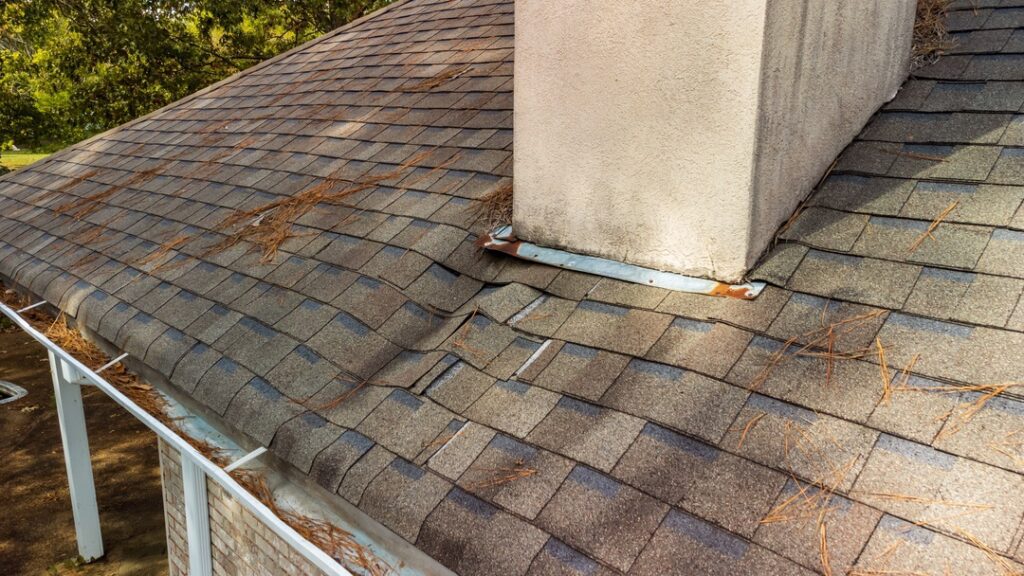
Signs that May Indicate a Roof Leak
Here’s what to look out for when you’re trying to find the source of a likely roof leak:
- Water stains on ceilings or walls
- Mold or mildew growth
- Damaged or discolored shingles
- Peeling or bubbling paint
- Wet insulation in the attic
- Damp spots in the attic or crawlspace
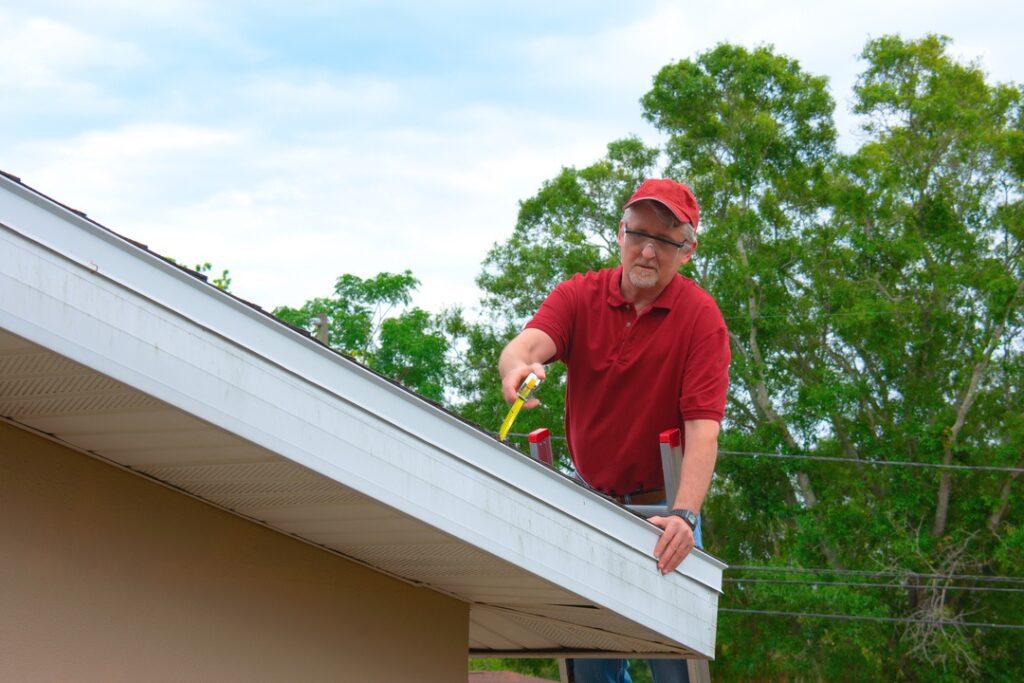
How to Inspect Your Roof for Potential Leaks
It’s best to take a thorough and systematic approach to checking your roof for leaks. Here are the steps we recommend:
- Perform visual inspections twice a year, ideally in spring and fall: Regular inspections can help detect minor issues before they become major problems, ensuring the roof remains in good condition and extending its lifespan. Start by examining the roof's exterior for visible damage. If you have a sloped roof, you may be able to view it from the ground—otherwise, you’ll probably need to access your rooftop for a closer look.
- Check for damaged or missing shingles: Identifying damaged or missing shingles early can help you prevent water infiltration and minimize the risk of leaks by replacing them as soon as possible.
- Inspect the flashing around vents, chimneys, and skylights: Regularly checking the flashing ensures it remains in good condition and maintains a watertight seal, preventing leaks around vulnerable roof penetrations.
- Examine gutters and downspouts for blockages: Clearing gutters and downspouts of debris allows for proper water drainage, reducing the risk of leaks and water damage to the roof's edge and structure.
- Look for signs of leaks inside the home and in the attic: Early detection of water stains, mold, or damp spots can prevent extensive interior damage and help identify the source of the leak, making it easier to repair quickly.
Required Tools & Equipment
To inspect your roof properly, we recommend that you use the following items:
- Binoculars
- A ladder
- A flashlight
- A moisture meter
- A roofing tarp or plastic sheeting (for temporary leak mitigation)
Safely Accessing Your Roof
To reach the top of your roof safely, keep the following tips in mind:
- Use a sturdy ladder with proper safety features
- Wear non-slip footwear
- Use a safety harness (especially if working on a roof with a steep slope)
- Avoid climbing onto your roof during inclement weather or high winds
How to Slow Down a Leak in Your Roof
Once you’ve found a leak in your roof, the next step is to prevent it from causing further water damage while you wait for professional help to arrive. Here’s what you should do:
- Place a bucket or container inside the house to catch dripping water underneath the leak.
- Use towels or rags to soak up excess water that has already entered your home
- Cover the leaky part of your roof with a tarp or plastic sheeting until it can be properly repaired
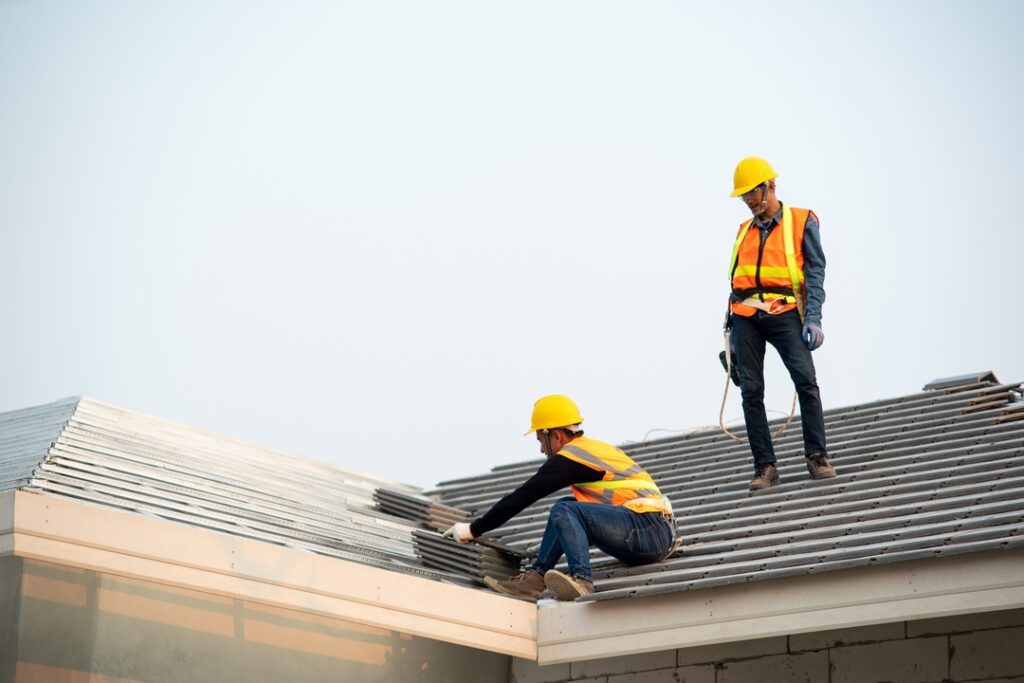
When to Call a Professional Roofer for Help with Leaks
The sooner you call a professional for roof repairs after you’ve discovered a leak, the less likely it will be to cause major water damage in your home. You can also skip right to calling for help if you know there’s a leak but can’t find the cause, or if you don’t feel comfortable climbing onto your roof by yourself.
Contact Guns N Hoses to learn more about our efficient approach to roofing repairs in Calgary. With our help, you’ll be able to make sure your roof stays safe from leaks and their effects for years to come.
Natural light is good for your mood, and it also makes your rooms and hallways look flattering and inviting. Sun tunnels are growing in popularity with Calgary residents because they make it possible to enjoy cost-effective natural lighting indoors.
But how do sun tunnels work, how much do they cost, and how much maintenance do they need? Don’t worry; the Guns N Hoses team is here to answer your questions. Read through our ultimate guide to sun tunnels for Calgary homeowners below so you can make an informed decision about whether or not to add one to your home.
What Is a Sun Tunnel?
Sun tunnels, also known as solar tubes or tubular skylights, are natural lighting solutions that capture sunlight and direct it into your home through a reflective tube. They are designed to provide a convenient and energy-efficient way of brightening up dark spaces in your home with natural light.
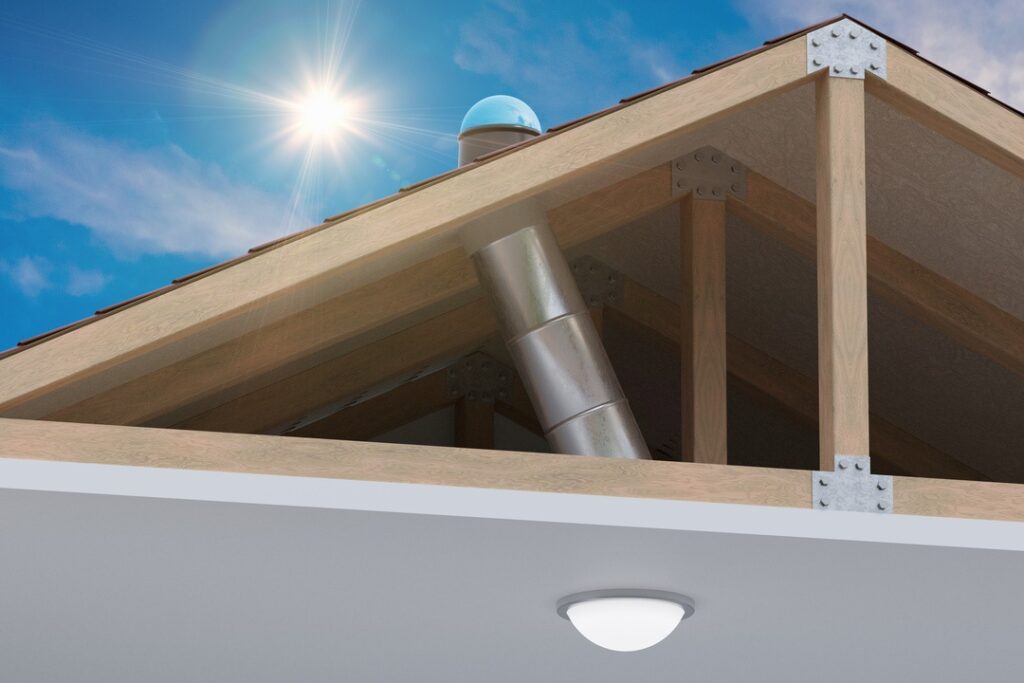
How Sun Tunnels Work
Sun tunnels consist of a dome-shaped, weather-resistant capture device mounted on the roof, which collects sunlight. The sunlight is then reflected down a highly reflective tube that runs through the attic or other spaces and finally diffuses the light into your home through a diffuser or lens. This process helps to evenly distribute the light and minimize heat gain or loss.
The Benefits of Sun Tunnels for Calgary Homeowners
Calgary has the highest number of sunny days per year out of any city in Canada—so sun tunnels can be a cost-effective way to illuminate the inside of your home on a consistent basis. They also provide several other advantages, including:
- Quick and easy installation: Sun tunnels have a simple design with few components, making them quicker to install than traditional skylights. They do not typically require major structural modifications, and their flexible, reflective tubes can be easily navigated through tight spaces in the attic.
- No heat loss: Sun tunnels have insulated, double or triple-glazed diffusers, which minimize heat transfer. This design feature helps to maintain the home's interior temperature and prevents heat loss or overheating.
- Low maintenance: Sun tunnels require little to no maintenance due to their durable, weather-resistant materials and self-cleaning dome design. Occasional inspection and cleaning of the exterior dome and interior diffuser are typically all that's needed.
- Design options: Sun tunnels offer various design options, such as different sizes, tube lengths, and diffuser styles. Customization features, like dimmers or decorative fixtures, can also be added to match the homeowner's preferences and interior decor.
The Costs of Sun Tunnels in Calgary
Installation Costs
The cost of a sun tunnel can range from several hundred dollars to over a thousand, depending on several factors. These include:
- Sun tunnel size and type: Different sun tunnel sizes and types have varying costs. Smaller, more basic sun tunnels tend to be more affordable, while larger, more advanced models can be more expensive.
- Roof type and slope: The type of roof and its slope can affect the installation complexity, and therefore, the cost. Steeper or more complex roofs may require additional labor or specialized equipment, increasing the overall cost.
- Installation complexity: Some installations may require modifications to your home's structure, such as framing, drywall work, or electrical work. These additional services can increase the overall cost of the project.
- Additional features: Customization options, such as adding a dimmer, ventilation fan, or decorative fixtures, can also impact the final price.
- Labor and materials: The cost of labor and materials in your area can also influence the total cost of the project.
To get an accurate estimate for installing a sun tunnel in your Calgary home, we recommend contacting Guns N Hoses for a consultation. Our team members will be able to assess your specific needs and provide you with a detailed quote tailored to your home and preferences.
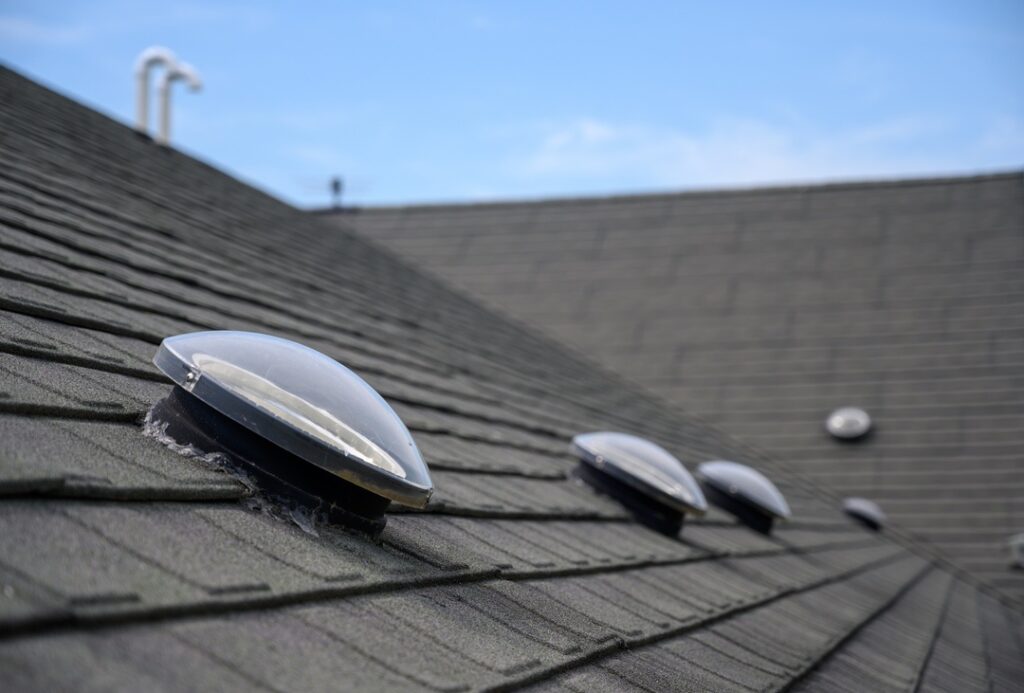
Maintenance Costs
While sun tunnels are known for being low maintenance, you may occasionally need to spend a small amount of money (and time) to keep them in shape over the course of their lifetime. Factors contributing to sun tunnel maintenance costs in Calgary can include:
- Periodically cleaning the exterior dome and interior diffuser
- Potential repairs after weather-related damage
- Replacing worn or damaged components over time
Always follow the manufacturer's guidelines for maintenance. This will keep your sun tunnel working efficiently and providing reliable natural light for years.
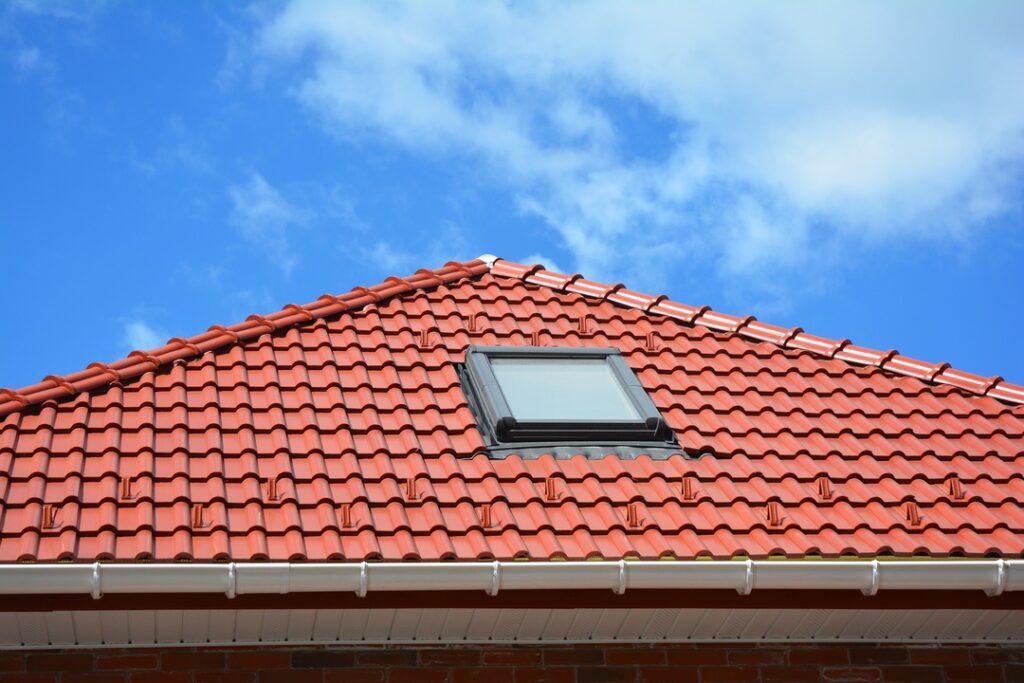
Frequently Asked Questions about Sun Tunnels in Calgary
Can sun tunnels be installed on any type of roof?
Sun tunnels can be installed on most roof types, including shingle, metal, and tile roofs. However, the installation process may vary depending on the roof material and slope.
Do sun tunnels work on cloudy days or during the winter months?
Yes! Sun tunnels can still provide a significant amount of natural light during cloudy days and winter months, though the light intensity may be lower compared to sunny days.
Can a sun tunnel be installed in a multi-story building?
While it's possible to install sun tunnels in multi-story buildings, the efficiency and light transmission may decrease as the length of the reflective tube increases. If you want to add a sun tunnel leading from your roof to a lower story, consult us to find out how feasible the project is and what will be involved.
How much money can a sun tunnel save me on lighting costs?
Sun tunnels can significantly reduce your reliance on artificial lighting during daytime hours, which leads to energy savings. Most homeowners can expect to save anywhere from 10% to 30% on electricity for lighting by using natural light from sun tunnels—but actual savings will vary based on your specific conditions and usage patterns.
Can sun tunnels withstand Calgary's harsh weather?
Yes—our high-quality sun tunnels are designed with durable, weather-resistant materials to withstand harsh weather conditions, including heavy snowfall and hailstorms. Working with us to put a sun tunnel in your home ensures that you receive a quality product and that it gets installed correctly, reducing the likelihood that it will be damaged by inclement weather.
Do sun tunnels increase the risk of ice dams or leaks in Calgary's cold climate?
When installed correctly by our professionals, sun tunnels should not increase the risk of ice dams or leaks. Our sun tunnels are designed with proper insulation and flashing to prevent condensation, heat loss, and potential leaks.
How to Install a Sun Tunnel that Brightens Up Your Home
Now that you know how sun tunnels work and what you can expect when installing or maintaining one, you’ll be able to seriously consider them as a way to enjoy beautiful natural light indoors. The next step is to make sure your sun tunnel project is carried out by experts—so that it can light your home effectively and you can count on it for years to come.
Contact Guns N Hoses to learn more about how we install sun tunnels for Calgary residents. We’ll provide you with recommendations based on your needs and accurate quotes for our work.
Your roof keeps out the rain, helps ensure your home’s structural integrity, and is a vital part of your property’s curb appeal—so protecting it from debris and inclement weather is essential for maintaining your investment. Impact-resistant shingles offer more durability than standard varieties—but is Calgary’s weather rough enough that you should consider using them for your next roof replacement?
As Calgary’s local roofing experts, our professionals at Guns N Hoses roofing have installed all kinds of shingles on homes throughout the city. We’ve seen the difference impact-resistant shingles can make up close, so we’re here to walk you through their costs and benefits to help you make an informed decision about how best to protect the roof over your head. Ready? Hail yeah—let’s go.
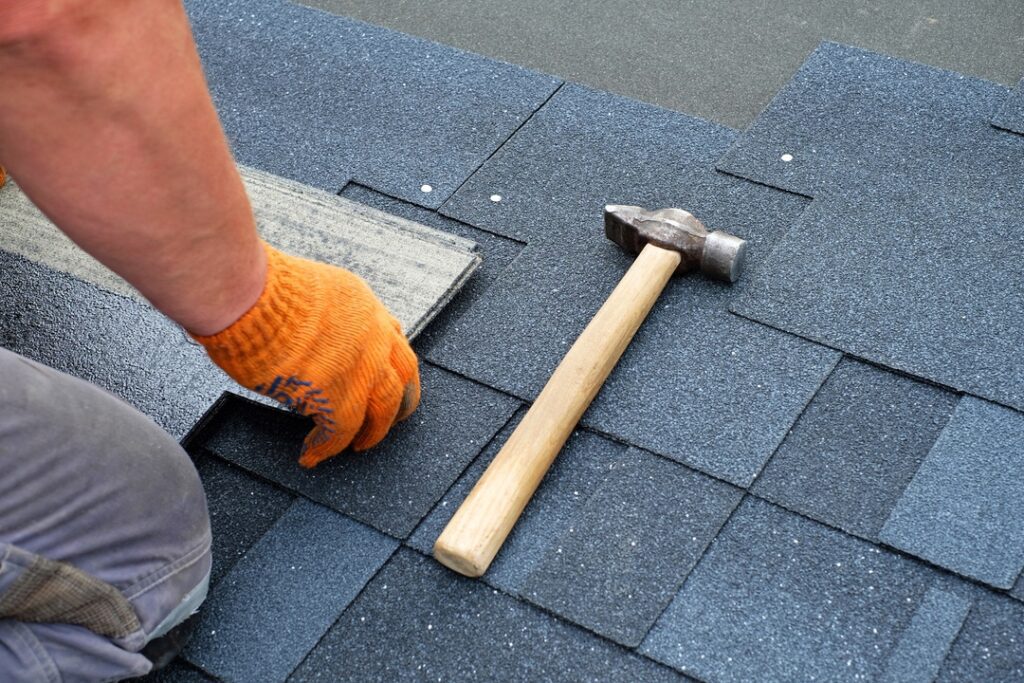
What Are Impact-Resistant Shingles?
Impact-resistant shingles are shingles specifically designed to withstand extreme weather conditions, such as:
- High winds
- Hail
- Flying debris
Unlike traditional three-tab and architectural shingles, which are made primarily of asphalt or fiberglass, impact-resistant shingles are made of more durable materials. They often use asphalt modified with a synthetic rubber-based polymer called SBS, which makes the shingles more flexible in a wide range of temperatures and less likely to crack when struck by objects.
The Benefits of Impact-Resistant Shingles
Homeowners who use impact-resistant shingles on their rooftops can experience the following benefits:
- Higher durability: In addition to their increased resistance to being struck by flying objects (see above), impact-resistant shingles are rated for higher wind speeds than traditional varieties. Standard shingles are typically suited for lower wind speeds, whereas impact-resistant shingles can often handle winds up to and even exceeding 200 km/h.
- Lower maintenance and repair costs: standard shingles have an average lifespan of 15-20 years, depending on specific weather conditions in your area and how well you take care of your roof. Impact-resistant shingles may last up to 30 years or more under similar conditions.
- Increased property values: since impact-resistant shingles provide better protection for your rooftop, they can be used as a selling point when putting your house on the market. Consult with your real estate agent or broker for details on how much adding impact-resistant shingles to your roof could boost the value of your home.
- A more robust appearance: impact-resistant shingles often have a thicker and more three-dimensional appearance than standard asphalt shingles, which can make your roof look more sturdy and appealing.
- Insurance Company Discounts ****
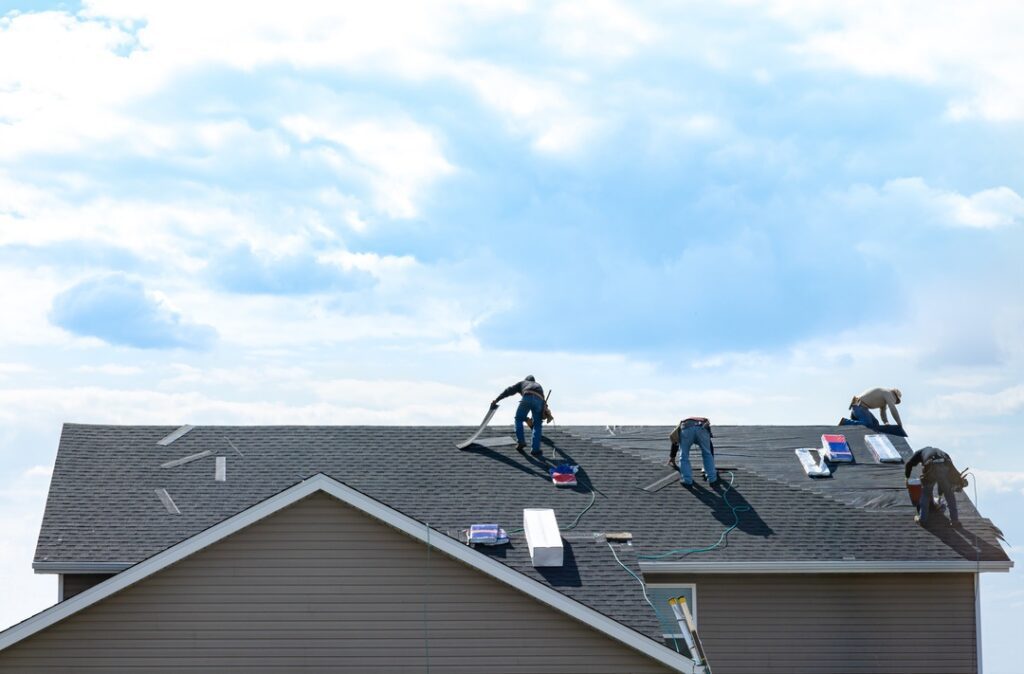
How Much Do Impact-Resistant Shingles Cost?
The costs of installing impact-resistant shingles on your rooftop will depend on several factors, including the square footage, shape, and slope of your roof. In many cases, impact-resistant shingles cost $7-$8 per square foot to install on Calgary rooftops, slightly more than standard shingles, which normally cost $5-$6 per square foot to install.
However, bear in mind that these numbers are only approximations, and that the best way to predict the costs of putting impact-resistant shingles on your rooftop is to call us for a quote. We’ll ask you specific questions about your roof and home to provide you with a quote you can trust.
Comparing the Long-Term Costs of Impact-Resistant and Standard Shingles
While impact-resistant shingles are more expensive than standard shingles, it’s possible for them to last twice as long. Since they only tend to be about 1/3rd more expensive on average, you can actually save money in the long run by having impact-resistant shingles installed on your roof. Here are two examples to illustrate, using a typical Calgary roof size of about 1500 square feet:
- $6 per square foot for standard shingles x 1500 square feet = $6000 over 15 years or $600 per year
- $8 per square foot for impact-resistant shingles x 1500 square feet = $9000 over 30 years or $400 per year
So as long as you plan to continue living in your home and take the time to maintain your roof properly, impact-resistant shingles are often an excellent investment. This is even more true when you consider Calgary’s erratic weather conditions.
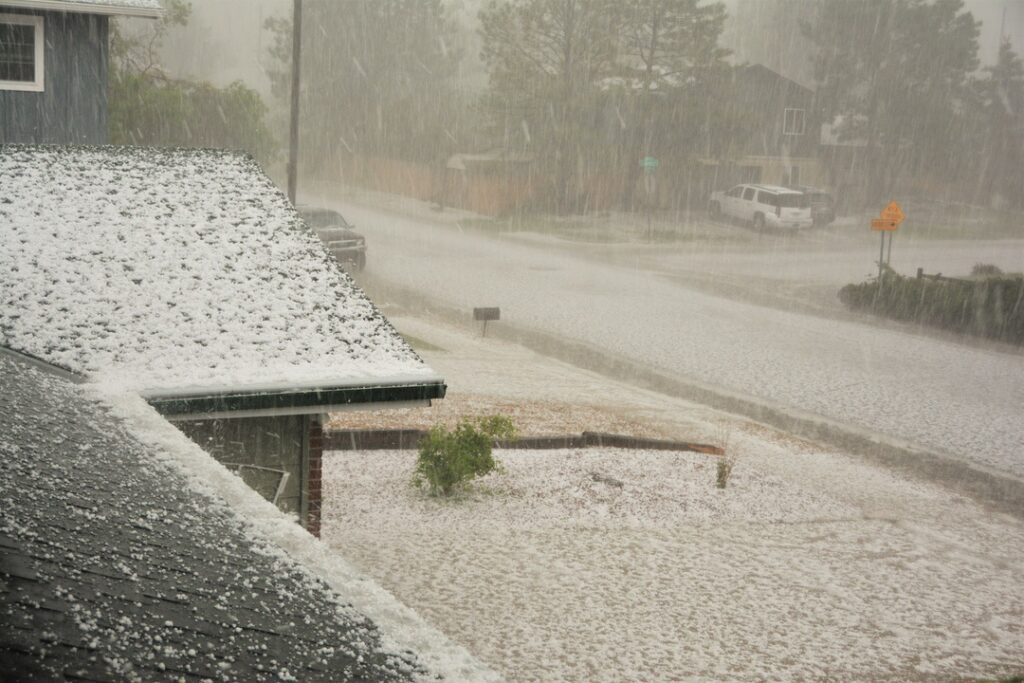
Do You Need Impact-Resistant Shingles in Calgary?
While it’s true that Calgary is Canada’s sunniest major city (with an average of 333 days of sunshine per year), that doesn’t mean the weather here is always gentle. In fact, Calgary is located smack-dab in the middle of “hail alley”—Canada’s most common region for hailstorms. On average, 5 hail storms hit the city every year, causing billions of dollars in damages to homes, businesses, vehicles, and other property.
Making the investment in impact-resistant shingles can save you money in the long run while protecting your home effectively and boosting its appearance. To learn more about the process of upgrading your roof for Calgary’s climate and conditions, contact Guns N Hoses and get in touch with one of our exterior experts.
Are you concerned about your roof but you can’t justify investing it in right now if you don’t absolutely have to? Guns N Hoses Roofing is currently offering you a FREE PEACE OF MIND VIDEO ROOF INSPECTION!
A leak in a roof is bad. Very bad. It is possible you can have a small leak happening for months before you see any interior damage. By the time you see interior damage from a roof leak, you could have a major problem. Roof inspections can seek out leaks or problem areas before major, expensive damage occurs. Catching a leak early, even before it happens, can save you a tonne of money.
It is difficult to see if a bad storm or years of wear and tear have damaged your roof when you are looking from the ground. Guns N Hoses Roofing will send a professional roofer to safely go up on your roof to assess the current condition of your entire roofing system. They will take a video for you, so you can see what they are seeing on your roof. Some things they will look out for are deteriorating or missing shingles, flashing that is damaged or detached, security of vents and goosenecks, and other aspects to your roofing system that could cause potential problems.
If our experts do find a problem area, they will give you an honest opinion of the repairs you need. Roof repairs can often be enough to mend a damaged area to your roof, depending on the circumstances. In some cases, the damage may be too extensive to repair and you may need a full roof replacement, especially if your roof is at the end of its lifespan. If that is the case, Guns N Hoses Roofing has different solutions to help you cross that bridge if you get there.
An inspection is different from an estimate. An estimate is when a roofer measures your roof and gives you a quote for what a new roof will cost you. A video roof inspection, as explained above, will evaluate how much life your roof has left, by completing a thorough evaluation of your roofing system. We normally charge $300 for our video inspections, but our gift to you, from now until May 31st, 2020, is offering this service for FREE so our clients can have peace of mind and start planning and budgeting for a new roof when the time comes.
Call today for your FREE – NO OBLIGATION – PEACE OF MIND VIDEO INSPECTION
